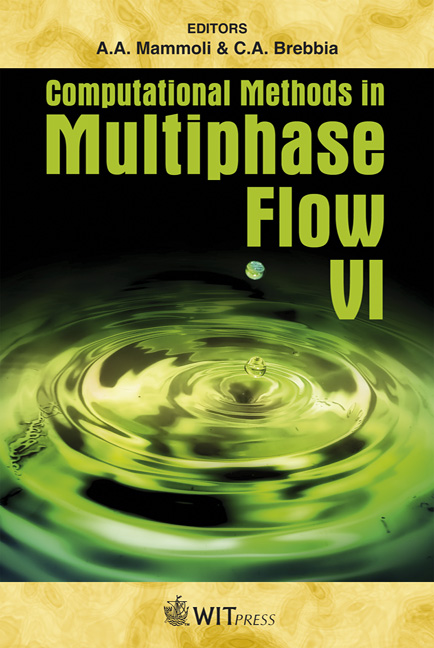Extension Of A Model For The Distribution Of Voidage Around Bubbles In A Fluidized Bed
Price
Free (open access)
Transaction
Volume
70
Pages
10
Page Range
189 - 198
Published
2011
Size
563 kb
Paper DOI
10.2495/MPF110161
Copyright
WIT Press
Author(s)
C. Rautenbach, C. Jayarathna, M. C. Melaaen & B. M. Halvorsen
Abstract
Up to date most models predicting the voidage around bubbles in fluidized beds assume a simple two-phase flow model. A classic example of a model using this basic assumption is the Davidson and Harrison bubble model. In more recent experimental studies it has been shown that there exists a shell of lower voidage around a bubble in a fluidized bed. Better understanding of these phenomenamight play a significant role in understanding other very important effects associated with bubbles in fluidized beds. An example of this might be better understanding the wake of a bubble rising in a fluidized bed and also to better predict mixing in a fluidized bed. The amount of contact between the gas and the solids in a gas-solid fluidized bed is paramount for designing an effective fluidized bed reactor. In the present study a model describing the voidage distribution in front and behind a bubble in a fluidized bed was reexamined and extended. The model proposed by Buyevich et al. used some basic assumptions and previously derived models to compose the model. In the present study the model is extended to two dimensions to give a non-uniform particle distribution around the bubble. Thus voidage distributions all around the bubble could be determined. This new distribution of the voidage could be used to determine a new form of the bubble surface and thus a new boundary condition for the fluidized bubble. The results from the model are compared with simulations carried out at the TUC in Porsgrunn, Norway. The results are discussed and evaluated.
Keywords
solid fraction, voidage distribution, bubble model, fluidization.





